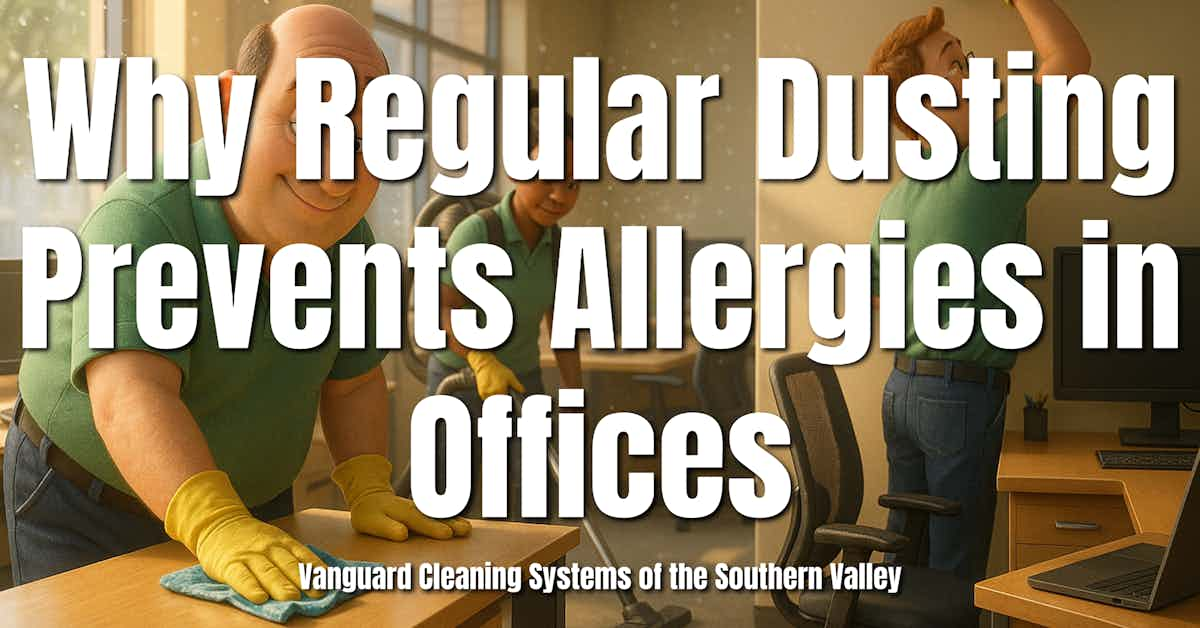How proactive air duct maintenance can improve air quality, energy efficiency, and operational performance in commercial facilities.

Why Regular Air Duct Cleaning Is Essential for Healthy, Efficient Buildings
Facility managers are responsible for keeping buildings healthy, efficient, and comfortable. While HVAC maintenance is a common priority, the condition of the air ducts that deliver that air is often overlooked. Duct systems are the building’s respiratory system — and when they’re dirty, everyone notices. Dust, debris, and contaminants accumulate quietly, leading to reduced air quality, higher energy costs, and premature equipment wear.
Proactive, regular duct cleaning helps avoid these issues, supporting better air quality, HVAC efficiency, and overall occupant satisfaction. This article explains why regular duct cleaning matters, how to plan it effectively, and how to make it part of a comprehensive maintenance strategy.
What Accumulates in Commercial Air Ducts
Over time, ducts collect a mix of airborne particles and contaminants, including:
- Dust and debris: Paper dust, fibers, and particulate matter that escape filtration.
- Allergens: Pollen, pet dander, and biological materials carried in from outside.
- Mold and microbial growth: Moisture or condensation in ducts can promote growth.
- Construction residue: Sawdust, drywall particles, and adhesives after renovations.
- Pest debris: Insects and rodents can leave waste or nesting materials.
Even with good filtration, buildup is inevitable. When airflow is restricted or contaminated, both indoor air quality and system performance suffer.
Why Regular Duct Cleaning Is a Smart Business Decision
a. Healthier Indoor Air Quality (IAQ)
Employees spend the majority of their time indoors. Clean air supports comfort, productivity, and wellness. Dust, mold spores, and allergens circulating through dirty ducts can irritate occupants and worsen respiratory conditions. Regular cleaning removes these pollutants, leading to cleaner, fresher air.
b. Improved HVAC Efficiency
Contaminants restrict airflow, forcing HVAC systems to work harder. This increases energy use and shortens the life of motors, fans, and coils. Clean ducts reduce resistance, helping systems run efficiently and lowering utility costs.
c. Lower Maintenance and Operating Costs
Duct cleaning complements other preventive maintenance. When ducts stay clean, filters last longer, coils require less cleaning, and overall system performance stabilizes. The result is a predictable maintenance budget and reduced emergency repairs.
d. Odor Control
Musty or stale smells are often signs of microbial buildup in ducts. Cleaning removes odor sources, creating a fresher and more professional indoor environment.
e. Regulatory Compliance and Risk Management
In healthcare, food service, and laboratory environments, air cleanliness is a compliance issue. Regular cleaning and documented maintenance help meet standards and reduce liability risk related to air quality complaints or inspections.
Determining Cleaning Frequency
Cleaning schedules should be based on inspection and building type, not guesswork.
| Building Type | Recommended Interval |
|---|---|
| Office buildings | Every 3–5 years |
| Hospitals / healthcare | Every 2–3 years |
| Industrial facilities | Every 1–2 years |
| Schools / universities | Every 3 years |
| Retail / hospitality | Every 2–3 years |
| Data centers | As needed |
Triggers for Immediate Cleaning
- Visible mold or water damage
- Pest infestation
- Dust blowing from vents
- Persistent odors
- Decline in HVAC performance
What a Professional Cleaning Should Include
A quality cleaning follows recognized standards like those from the National Air Duct Cleaners Association (NADCA). Key steps include:
- Inspection using cameras and sensors.
- Containment to prevent contaminant spread.
- HEPA-filtered vacuuming to capture particles safely.
- Mechanical agitation to dislodge debris.
- System-wide cleaning including coils, plenums, and registers.
- Post-cleaning verification with documentation and photos.
Always verify contractor credentials, insurance, and adherence to NADCA standards.
Integrating Duct Cleaning into Preventive Maintenance
a. Inspection
Conduct annual inspections using imaging or particle analysis to assess buildup.
b. Filter Replacement
High-efficiency filters (MERV 11 or higher) trap smaller particles, reducing duct contamination. Replace on a set schedule.
c. Moisture Management
Keep humidity between 30–50% to prevent mold. Fix leaks and condensation issues promptly.
d. Duct Sealing
Seal leaks to prevent dust infiltration and energy loss.
e. Recordkeeping
Maintain cleaning logs, photos, and airflow data to demonstrate compliance and track system health.
Calculating ROI
Regular duct cleaning can produce a strong return on investment:
Direct savings
- Reduced energy bills
- Extended equipment lifespan
- Fewer repairs
Indirect benefits
- Healthier occupants and fewer complaints
- Improved tenant satisfaction
- Stronger ESG and sustainability performance
The combination of efficiency gains and risk reduction makes regular cleaning a cost-effective strategy.
Common Myths About Duct Cleaning
Myth 1: It’s unnecessary unless ducts look dirty.
Fact: Buildup can reduce efficiency long before it’s visible.
Myth 2: Cleaning stirs up more dust.
Fact: Proper methods capture dust using negative pressure and HEPA filtration.
Myth 3: It’s just cosmetic.
Fact: The main benefits are operational and financial.
Myth 4: All contractors are the same.
Fact: Only certified professionals following NADCA standards should perform the work.
People Also Ask (PAA)
1. How often should commercial ducts be cleaned?
Every three to five years, or sooner for high-use or industrial facilities.
2. Can duct cleaning lower energy bills?
Yes, by improving airflow and system efficiency.
3. Do dirty ducts cause illness?
They can worsen allergies and respiratory irritation by circulating contaminants.
4. What’s the best season for cleaning?
Spring or fall, when HVAC systems are less active.
5. Should the entire HVAC unit be cleaned?
Yes, including coils, drain pans, and diffusers.
Frequently Asked Questions (FAQ)
Q1: How is commercial duct cleaning different from residential?
A: Commercial systems are larger, more complex, and often require specialized containment and safety protocols.
Q2: How can I tell if cleaning is needed?
A: Look for dust buildup, odors, or airflow imbalance. A video inspection provides clarity.
Q3: How long does cleaning take?
A: From one day for small offices to several days for large facilities.
Q4: Will cleaning disrupt operations?
A: Professional contractors can work off-hours and isolate zones to prevent downtime.
Q5: Can cleaning damage ducts?
A: Not if done correctly with proper equipment and trained technicians.
Conclusion
Air duct cleaning is a smart, proactive strategy that supports cleaner air, lower costs, and more reliable HVAC performance. For facility managers, integrating it into preventive maintenance ensures systems operate efficiently and occupants enjoy a healthier environment.
Clean ducts aren’t just about air—they’re about the overall performance and reputation of your facility.
Vanguard Cleaning Systems of the Ozarks' franchise-owned custodial service provider business cleans more than 8M sq. ft. weekly, maintaining an industry-topping 95+% of its customer base, year-over-year, and boasting more than 60 5-star Google reviews.
Need more capability from your vendor partners? --Let's talk.
In Oklahoma, dial 918-960-4450
In Arkansas, dial 479-717-2410
In Missouri, dial 417-812-9777

